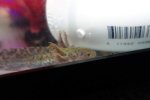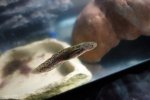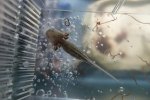Boomsloth
Member
So I've seen the topic of gills come up a lot here and its generally agreed that while water quality, diet, and aeration affects gill length/frillyness, its mostly genetics that dictates the overall outcome. Therefore I'm posting pictures of some of my axolotls that I received from a very experienced breeder vs one I bought at a lfs.










